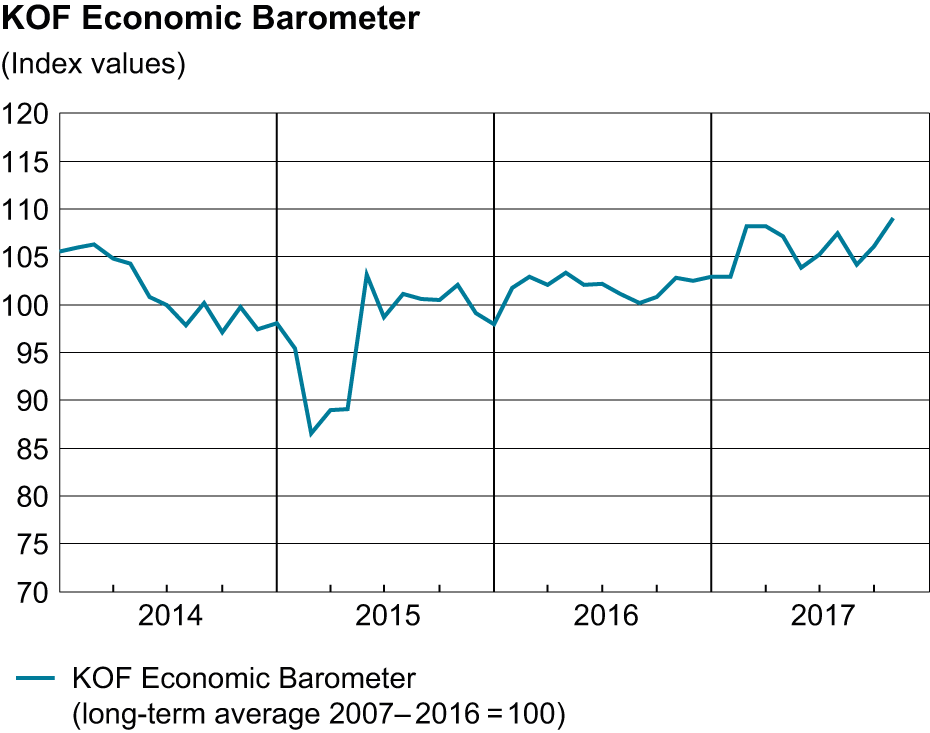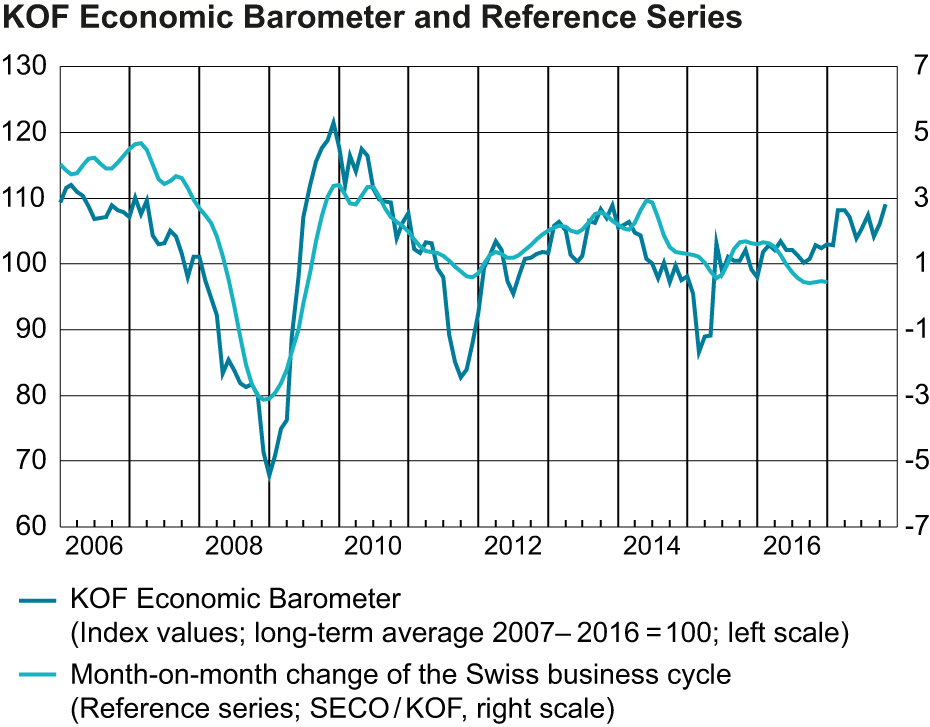The KOF Economic Barometer rose by 3.0 points in October. This is the second upward movement in succession. The indicator reached 109.1 points in October (after revised 106.1 in September). Autumn is welcoming the Swiss economy with a tailwind. In October 2017, the KOF Economic Barometer rose to a new reading of 109.1 points, its highest level since September 2010. The upward tendency is mainly driven by the banking and manufacturing indicators. However, the prospects for exports and the accommodation and food service activities are also somewhat better than before. The indicators for domestic consumption are stagnating, and the indicators for the further development of the construction sector have declined
Topics:
KOF Zurich considers the following as important: Featured, newsletter, Swiss Macro, Switzerland KOF Economic Barometer
This could be interesting, too:
Nachrichten Ticker - www.finanzen.ch writes Die Performance der Kryptowährungen in KW 9: Das hat sich bei Bitcoin, Ether & Co. getan
Nachrichten Ticker - www.finanzen.ch writes Wer verbirgt sich hinter der Ethereum-Technologie?
Martin Hartmann writes Eine Analyse nach den Lehren von Milton Friedman
Marc Chandler writes March 2025 Monthly
The KOF Economic Barometer rose by 3.0 points in October. This is the second upward movement in succession. The indicator reached 109.1 points in October (after revised 106.1 in September). Autumn is welcoming the Swiss economy with a tailwind.
|
In October 2017, the KOF Economic Barometer rose to a new reading of 109.1 points, its highest level since September 2010. The upward tendency is mainly driven by the banking and manufacturing indicators. However, the prospects for exports and the accommodation and food service activities are also somewhat better than before. The indicators for domestic consumption are stagnating, and the indicators for the further development of the construction sector have declined somewhat. Within manufacturing, the indicators for machinery, metal, electrical equipment, paper and other manufacturing industries are pointing upwards. The indicators for the textile industry remain virtually unchanged. However, data on the food, wood and chemicals industries dampened the otherwise generally positive development. In the goods producing sector (manufacturing and construction), employment indicators have brightened and the competitive situation of firms has improved. In contrast, the indicators for production and demand have declined. |
KOF Economic Barometer, October 2017(see more posts on Switzerland KOF Economic Barometer, ) Source: kof.rthz.ch - Click to enlarge |
KOF Economic Barometer and reference time series: annual updateIn September 2017, the scheduled annual update of the KOF Economic Barometer took place. The annual update of the Barometer concerns the following steps: redefinition of the pool of indicators that enter the selection procedure, update of the reference time series and renewed execution of the variable selection procedure. The updated reference series is the smoothed continuous growth rate of the Swiss Gross Domestic Product (GDP) according to the new System of National Accounts ESVG 2010, released in early September 2017, which takes into account the release of the previous year’s annual GDP data by the Swiss Federal Statistical Office. As a result of the indicator variable selection procedure, the updated KOF Economic Barometer is now based on 273 indicators (instead of 272 as in the previous vintage) from a pool of almost 500 potential indicator series. They are combined using statistically determined weights. |
KOF Economic Barometer and Reference Series, October 2017(see more posts on Switzerland KOF Economic Barometer, ) Source: kof.ethz.ch - Click to enlarge |
Tags: Featured,newsletter,Switzerland KOF Economic Barometer
